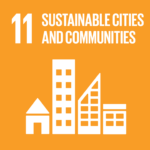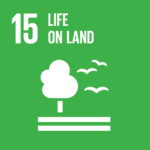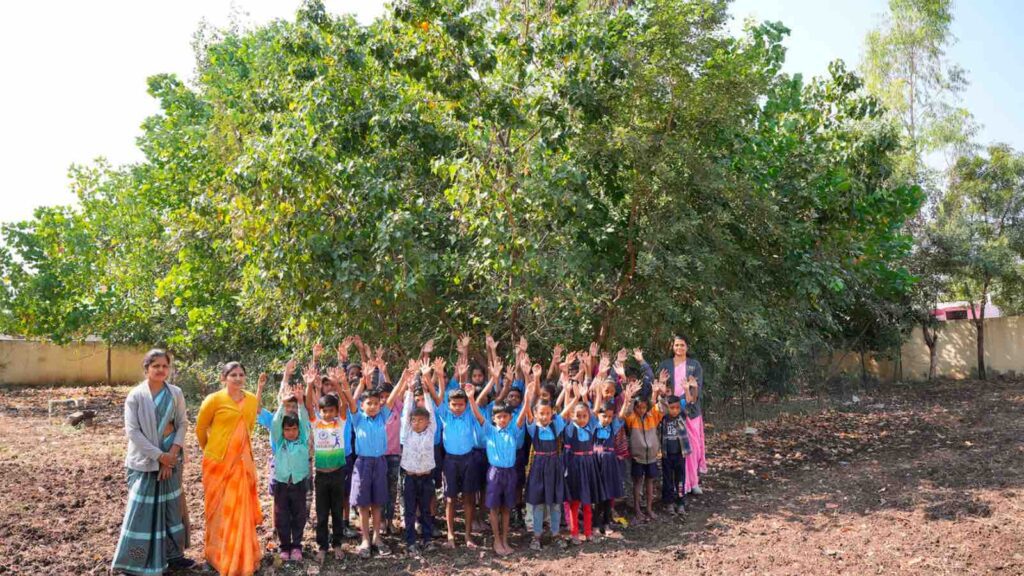Over the past four years, a pioneering initiative has planted 50 pocket forests across 50 schools, reintroducing biodiversity, mitigating climate challenges, and embedding ecological awareness into the hearts and minds of more than 6,000 students, teachers, and community members.
In the parched landscape of Aurangabad, India, where summer temperatures routinely soar past 40°C and deforestation has stripped 94% of the land of tree cover, a quiet revolution is unfolding. Schools, once symbols of traditional education, are transforming into thriving ecosystems—living classrooms where students learn not just from textbooks but from nature itself.
RELEVANT SUSTAINABLE GOALS




Over the past four years, a pioneering initiative has planted 50 pocket forests across 50 schools, reintroducing biodiversity, mitigating climate challenges, and embedding ecological awareness into the hearts and minds of more than 6,000 students, teachers, and community members. These forests are more than just clusters of trees; they are self-sustaining ecosystems, bringing nature back into the lives of young learners and fostering a generation equipped to tackle environmental challenges.
A Classroom Beneath the Canopy
The initiative, part of the larger Green Schools Mission, aims to create green sanctuaries within schools—places where education and conservation go hand in hand. Some of the schools that have embraced this transformation include ZPPS Tarupimpalwadi, ZPPS Kaygaon, ZPPS Itawa, ZPPS Jayakwadi, ZPPS Milani Wadgaon, ZPPS Ranjangaon, and many more.
Planted between August 2020 and January 2021, these forests have rapidly exceeded growth expectations. Their dense canopies have attracted local wildlife, including rabbits, snakes, and even the elusive Indian grey mongoose, spotted at ZP Murumkhedawadi. Wild native honeybees (Apis cerana) have built hives in the trees at ZP Bhivdhanora, and saplings are naturally regenerating beneath mature trees—clear signs of a thriving ecosystem.
From Forest to Table: Training Future Forest Makers
At ZPPS Dinwada Juna, the Green Schools Mission has inspired a unique approach to sustainability—one that extends beyond reforestation and into daily life. Here, the school’s newly planted Miyawaki forest has become a direct source of nourishment, with students incorporating freshly grown spices like ajwain (carom seeds) into their mid-day meals. Known as a “cleansing spice” with digestive and medicinal benefits, ajwain is just one example of how these forests are fostering deeper connections between students and the natural world.
This innovative “forest-to-table” approach reflects a growing movement toward self-sufficiency and environmental stewardship in rural Maharashtra, demonstrating how nature-based solutions can simultaneously support education, biodiversity, and local well-being.
Beyond simply planting trees, this initiative aims to democratize knowledge about ecosystem restoration. Led by EcoSattva in partnership with the Arbor Day Foundation, the program is training teams at each school to care for and sustain these forests, ensuring they serve as healing and learning centers for generations to come.
The methodology behind these forests is rooted in the Miyawaki method, a technique that accelerates forest growth and increases biodiversity by planting a dense variety of native species. This ensures that even in a harsh climate like Aurangabad, these forests can establish themselves quickly and thrive with minimal maintenance.
A Megadiverse Nation: Preserving India’s Natural Heritage
According to the International Union for Conservation of Nature (IUCN), India is one of the world’s “megadiverse”countries, home to 7-8% of all global species, including approximately 45,000 plant species and 91,000 animal species. From rainforests and marine ecosystems to deserts and grasslands, India’s biodiversity is vast, but also increasingly vulnerable to climate change and urbanization.
By embedding nature education within schools, this initiative is instilling an early understanding of ecosystem conservation. Students are not just learning about forests; they are growing them, observing them, and becoming stewards of their survival.
You may also be interested in :
Agroforestry: A Key Solution For Coffee and Climate Resilience




